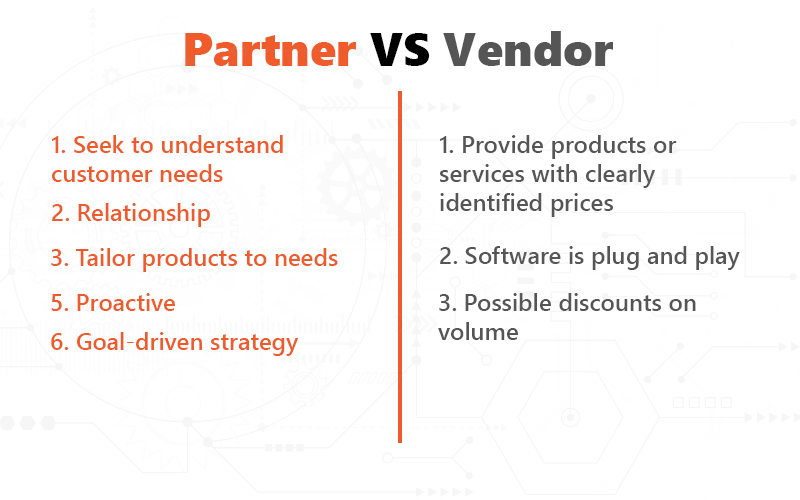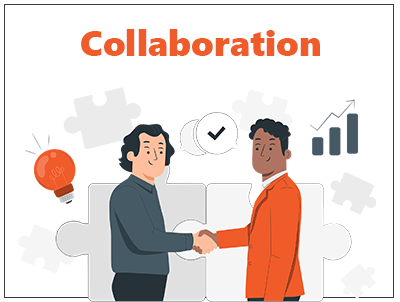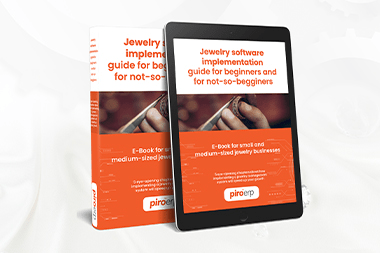Jewelry software vendor versus partner – the key differences
Some first-time buyers of jewelry software compare its implementation to installing Windows: they believe that they just need to unpack the software, install it, and start using it. However, the implementation of jewelry management systems is never as simple as that. These systems are process management tools and require tailoring to suit a company's specific processes. This process demands a proactive approach and a carefully planned implementation strategy.
In this context, Microsoft is considered a vendor because their product is provided on a transactional basis. Unless you require technical support, there is no further interaction between you and the company. The biggest difference between a vendor and a partner is that a partnership can provide more business value. A partnership is strategic and flexible, with a win-win approach that benefits both companies. Unlike Microsoft, we are interested in the successful implementation and operation of your system and will step in to offer support if needed.
The difference between a vendor and a partner is that while the former relationship is transactional, the latter is highly collaborative.

Problem-solving equals collaboration and configuration (customization)
During a digital transformation, jewelry companies have specific needs that are difficult for vendors to understand. Off-the-shelf solutions may seem appealing, but they often fail to address the underlying problems. If you were previously tracking processes with pen and paper or Excel sheets, these methods may not be eliminated by using an off-the-shelf solution.

Partners immerse themselves in your business and examine the nuances of your needs. Our highly configurable jewelry software, PIRO Fusion, can be tailored to address these nuances. However, this process takes time, and implementation can take up to six months.
We approach every project with a long-term perspective, ensuring that the solution is viable for five to ten years. Some companies have declined our partnership because they could not accept the implementation timeline or understand the collaborative nature of the project. They sought a vendor who could provide a system that would start working immediately, but we prioritize long-term partnerships. There is nothing wrong with seeking a vendor, but we strive to build long-term relationships with our clients.
If you don’t accept us as a partner, we cannot be your jewelry software vendor.
This is simply because PIRO Fusion is not the typical off-the-shelf software. In order to utilize its main benefit, which is high-level automation of your operational processes, we need to map your existing processes perfectly. Sometimes we even have to do additional code writing to achieve this.

This entire process is like growing a second arm for your organization. Yes, you may have been able to get the job done with one hand in the past, but imagine how much more efficient your organization could be if you had two hands. While an off-the-shelf software may mimic a second arm, the results would be incomparable.
If you still need more convincing on why a partnership is the better choice for your company, you can read about it on: Clover Imaging Group’s blog:
- Partners grow your business - Vendors grow theirs
- Partners provide support - Vendors dictate terms
- Partners hang through during a crisis - Vendors can cut and run
A partnership is also about transparency and mutual trust. Building trust and finding common ground for win-win situations becomes inevitable along the way, even when interests don’t necessarily align. A partnership does not mean that only one partner has to make sacrifices. For example, if you need an integration or a custom feature, a partner will be more than happy to work on that if the efforts are compensated by the customer.
Remember, a partnership is a strategic business relationship that will last for as long as you use that jewelry software.
Ready to get on board with us? Requesting a software demo is a great start: www.gopiro.com/demo
FAQ: Vendor vs Partner - Why jewelry software needs true collaboration
- What’s the difference between a vendor and a partner in jewelry software?
A vendor offers a transactional product with minimal follow-up, while a partner works alongside you, offering support, customization, and long-term operational success. - Why are off-the-shelf solutions often inadequate for jewelers?
They typically fail to account for nuanced, manual workflows developed over years. Simply installing software doesn’t eliminate root process issues that Excel or paper-based systems have masked. - Why does implementing PIRO Fusion require careful process mapping?
Because its power lies in high-level automation tailored to your business logic. That level of precision demands time, understanding, and occasional custom code to align the system with your workflows. - What makes PIRO choose partnership over just selling software?
PIRO invests deeply in client success, supporting go-live, offering continuous help, and ensuring the system runs reliably for 5 to 10 years, not just during deployment. This strategic, collaborative model distinguishes it from purely transactional software vendors. - Why is PIRO Fusion not a typical off-the-shelf product?
Its configurability, focus on process automation, and willingness to adapt to unique business needs make it more of a bespoke solution. This enables operational efficiency like nothing an off-the-shelf product can match, if you're open to collaborating.






